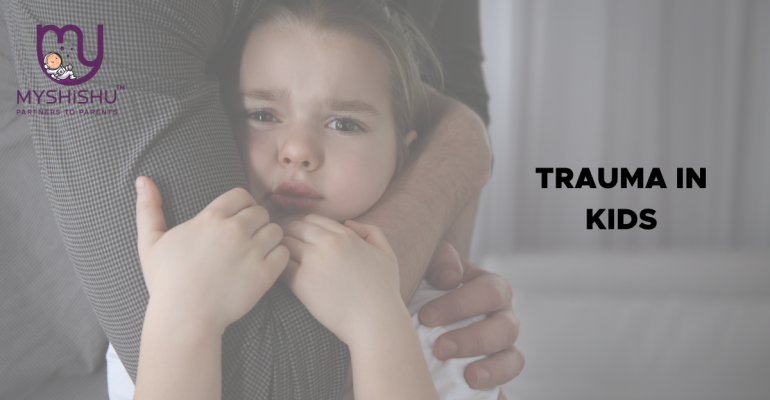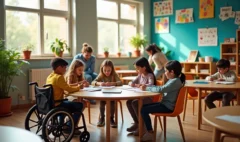Trauma in Kids: An In-Depth 10 Things To Note
Trauma in Kids: An In-Depth 10 Things To Note
Trauma in kids paints a poignant narrative within the intricate tapestry of childhood, where dreams and aspirations are interwoven with a silent struggle often overlooked. The term “trauma in kids” encapsulates a broad spectrum of challenges, from visible physical wounds to the invisible but profound emotional scars that can shape the very essence of a child’s being.
Introduction
Children, inherently resilient, encounter life’s adversities with remarkable strength. However, when faced with experiences that overwhelm their tender coping mechanisms, the impact can reverberate through their lives. This exploration into the world of trauma in kids is not merely a journey through adversity; it is a crucial endeavor to unveil the layers that shape their emotional landscape. From the recognizable signs that whisper silent pleas for help to the far-reaching effects that alter the trajectory of their development, understanding trauma in children is an essential step toward fostering healing and resilience.
What Is Trauma In Kids?
Trauma in kids encompasses a complex array of distressing experiences that have the potential to deeply impact a child’s well-being. Unlike physical injuries that heal with time, childhood trauma extends beyond the realm of the visible, leaving an indelible mark on a child’s emotional and psychological landscape.
At its core, trauma refers to experiences that overwhelm a child’s ability to cope, disrupting their sense of safety and security. These experiences can manifest in various forms, ranging from physical or emotional abuse to neglect, accidents, or the witnessing of violence within the family or community. What distinguishes these incidents as traumatic is not only their intensity but also the profound and lasting effects they imprint on a child’s developing mind.
For a child, trauma can be an insidious force, shaping their worldview and influencing their understanding of themselves and the world around them. It’s crucial to recognize that trauma is not confined to catastrophic events; it can stem from chronic stress, persistent instability, or repeated exposure to adverse circumstances. The impact of trauma is often cumulative, with each distressing experience contributing to a child’s emotional burden.
In the context of childhood, where the foundation for future well-being is laid, trauma can disrupt normal developmental processes. It may hinder the formation of secure attachments, impede cognitive and emotional growth, and contribute to behavioral challenges. Identifying and understanding trauma in kids is the first step toward providing the support and intervention necessary for healing and building resilience. It requires a nuanced understanding of the diverse ways trauma can manifest and a commitment to creating environments that nurture recovery and growth.
Defining Childhood Trauma: Unraveling the Layers
To embark on this enlightening journey, it’s crucial to comprehend the nuanced layers that makeup “trauma in kids.” Childhood trauma refers to distressing experiences that overwhelm a child’s ability to cope, leaving a lasting impact on their cognitive, emotional, and social development. These experiences can manifest in various forms, ranging from physical or emotional abuse to neglect, accidents, or the witnessing of violence. Understanding the depth and complexity of these experiences is essential for tailoring effective interventions.
The Far-Reaching Effects: How Trauma Shapes a Child’s Worldview
Trauma doesn’t merely end with the distressing incident; its effects can reverberate across a child’s life, influencing their cognitive and emotional development. Altered brain development, impaired social skills, and challenges in forming healthy relationships are just a few facets of the far-reaching consequences of childhood trauma. Recognizing these effects is crucial for devising intervention strategies that address the comprehensive needs of the child.
Identifying the Signs: Unveiling the Silent Screams
Recognizing the signs of trauma is the first step toward providing support. Children may express their distress through a myriad of behavioral changes, regression, nightmares, or physical symptoms. Attentive caregivers and educators play a pivotal role in identifying and addressing these signals promptly, acting as crucial pillars of support for the child’s recovery.
Breaking the Cycle: Preventing Intergenerational Trauma
Trauma has the potential to perpetuate through generations, creating a cycle that can be challenging to break. Breaking this cycle requires a holistic approach that not only addresses the immediate needs of the child but also supports parents and caregivers in creating a nurturing environment. Equipping families with the tools to break free from the chains of intergenerational trauma is a key aspect of fostering lasting change.

Educational Settings: Trauma-Informed Approaches in Schools
Schools serve as crucial spaces where children spend a significant part of their formative years. Implementing trauma-informed approaches in education involves creating safe, supportive environments, training educators to recognize and respond to trauma, and incorporating strategies that acknowledge the impact of trauma on learning. A trauma-sensitive school environment can significantly contribute to a child’s healing and academic success.
Healing Through Connection: The Role of Relationships in Recovery
The human connection serves as a powerful healing force for children who have experienced trauma. Building strong, supportive relationships with caregivers, peers, and mentors can contribute significantly to a child’s resilience and recovery. Cultivating an environment where children feel safe, heard, and understood is foundational to the healing process.
Cultural Sensitivity: Recognizing Diverse Experiences of Trauma
Trauma manifests differently across diverse cultural backgrounds. A trauma-informed approach must be sensitive to cultural nuances, acknowledging and respecting the unique experiences that children from various backgrounds may bring to the table. Understanding and embracing cultural diversity is vital for tailoring interventions that resonate with the individual needs of each child.
Therapeutic Interventions: Nurturing Emotional Well-Being
Therapeutic interventions play a crucial role in helping children process and overcome trauma. From play therapy to cognitive-behavioral approaches, these interventions aim to address the emotional and psychological impact of trauma. Accessible mental health resources and professionals trained in trauma-focused care are vital components of this support system, ensuring that children receive the specialized care they need.
Empowering Parents: Equipping Caregivers to Navigate Trauma
Parents and caregivers, as the primary anchors in a child’s life, play a pivotal role in the healing process. Providing them with resources, education, and support helps create a nurturing home environment conducive to a child’s recovery. Empowering parents with the knowledge and skills to navigate trauma allows them to be active participants in their child’s journey toward healing
Community Engagement: Creating a Trauma-Informed Society
To address trauma in kids comprehensively, community-wide efforts are imperative. From advocating for policies that support mental health services to reducing stigmas around seeking help, creating a trauma-informed society involves collective action and awareness. Engaging communities in conversations about trauma, providing education on its impact, and fostering a culture of empathy and support are essential steps toward creating environments where every child can thrive.
Additional Common Questions
-
What are the signs of trauma in a child?
Common preschooler reactions to trauma
– be more jumpy or startle easily.
– develop new fears.
– have more nightmares.
– talk about the frightening event more or have it in their play or drawings.
– not seem to be reassured when talking about the scary event and asking about it again and again. -
What are the 5 childhood traumas?
Objective: To examine relationships between 5 types of childhood trauma (witnessing violence, physical neglect, emotional abuse, physical abuse, and sexual abuse) and an aggression score based on 21 self-reported aggressive behaviors in adulthood.
-
How can trauma affect a child’s Behaviour?
Trauma can affect behavior in kids by causing hypervigilance, trouble managing emotions and forming relationships with other people, and difficulty with executive functioning.
-
How do children with trauma behave?
Such a child may seem “spacey”, detached, distant, or out of touch with reality. Complexly traumatized children are more likely to engage in high-risk behaviors, such as self-harm, unsafe sexual practices, and excessive risk-taking such as operating a vehicle at high speeds.
-
How do kids recover from trauma?
Therapy helps kids find their courage and gain confidence. Child therapy for trauma is called trauma-focused cognitive-behavioral therapy (or TF-CBT). Therapy includes talk, play, and learning activities that heal trauma. TF-CBT helps parents too.
Conclusion
In understanding the complexities of trauma in kids, we unveil a shared responsibility to nurture resilience and create a supportive environment for the youngest members of our society. By recognizing the signs, implementing trauma-informed approaches in various settings, and fostering healing relationships, we can break the chains of trauma and empower children to embrace a brighter tomorrow. Let us strive to be advocates for change, working collectively to create a world where every child can grow, learn, and flourish despite the challenges they may face. The journey to resilience is a collective one, and as a society, we hold the power to shape a future where the scars of trauma do not define the path ahead.











